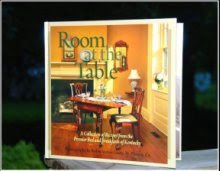Stop buying water in plastic bottles
Save resources by drinking from a glass whenever you can, or use a refillable, stainless steel bottle when you are on the go. Ever wonder where most of those plastic water bottles go that we knock back from every day? Into landfills, where they live on and on and on and on. Exempt from many state deposit laws, and most often used away from home, where recycling bins are scarce, the majority of water bottles do not make it into the recycling stream.
Not only do they accumulate and stress landfills, they are made from polyethylene terephthalate (PET), a petroleum product, and their manufacturing process uses oil, a nonrenewable energy source, and increases CO2 emissions. So kick the plastic water bottle habit. That way you can avoid the controversy over chemicals leaching from both hard and soft plastics into your water, even at room temperatures.
Stop using harsh chemicals
Instead of harsh chemical sprays, get those windows and mirrors crystal clear with a simple solution of white vinegar, newspaper and a little elbow grease. You'll also save money and the hassle of needing to stock more cleaning supplies.
It's simple: mix 2 tablespoons of white vinegar with a gallon of water, and dispense into a used spray bottle. Squirt on, then scrub with newspaper, not paper towels, which cause streaking.If you run out of vinegar, or don't like the smell, you can also substitute straight lemon juice or club soda (don't dilute either in water), and rub with newspaper. See, simple!
Stop using bulbs that are not energy savers
This one is a no-brainer: Swap your old incandescent bulbs for compact fluorescents (CFLs). Each bulb may cost a little more (between $2 and $7), but a compact fluorescent will pay for itself in mere months and prevent 450 pounds of power-plant emissions over the bulb's lifetime.
If every U.S. household replaced just one incandescent bulb with a compact fluorescent light bulb, the amount of energy saved could light 2.5 million homes for a year.To help choose the bulb with the right light output for your purposes, visit the chart on EnergyStar. If you need further convincing, Popular Mechanics has recently done a lab test comparing CFLs and incandescents. You'll be surprised at the findings.
Stop wasting energy
If you are really serious about cutting your energy costs, this will make a difference. Make sure ALL electrically driven items are Shut Off and/or disconnected completely when not in use for extended periods. And, have guests keep their towels two days and their linens three days
Computers, TVs, gaming units, night-lights, coffee pots with clocks, microwaves, printers, etc. Use programmable thermostats for different times of the day, and set lower temps (heat), or higher temps (a/c), when you are on vacation or go for extended periods. Burnt out light bulbs should be replaced, or at the very least, removed. If you start looking around your home you will find many more ways to conserve.
Buy and recycle recyclables
Buy and use Green products
Conserve water
(this is just a start. We promise to do more)
If you enjoyed this post, please consider making a comment
 The Humana Festival, of new American plays, is still amazing and entertaining audiences in Louisville. The festival, which runs every year for six weeks, will be here until April 11. Seven plays and several 10-minute plays are still running. One of the favorites will be extended until April 26th at the Pamela Brown Auditorium and is reviewed below:
The Humana Festival, of new American plays, is still amazing and entertaining audiences in Louisville. The festival, which runs every year for six weeks, will be here until April 11. Seven plays and several 10-minute plays are still running. One of the favorites will be extended until April 26th at the Pamela Brown Auditorium and is reviewed below: n Henry County, Ky. He has taught at Georgetown College, Stanford University, New York University and University of Kentucky, his alma mater. The author of over forty books of poetry, essays and fiction, Mr. Berry has received numerous fellowships and awards. He lives and works with his wife, Tanya Berry, on their farm in Port Royal, Ky.
n Henry County, Ky. He has taught at Georgetown College, Stanford University, New York University and University of Kentucky, his alma mater. The author of over forty books of poetry, essays and fiction, Mr. Berry has received numerous fellowships and awards. He lives and works with his wife, Tanya Berry, on their farm in Port Royal, Ky.



















 Nancy Hinchliff
Nancy Hinchliff





